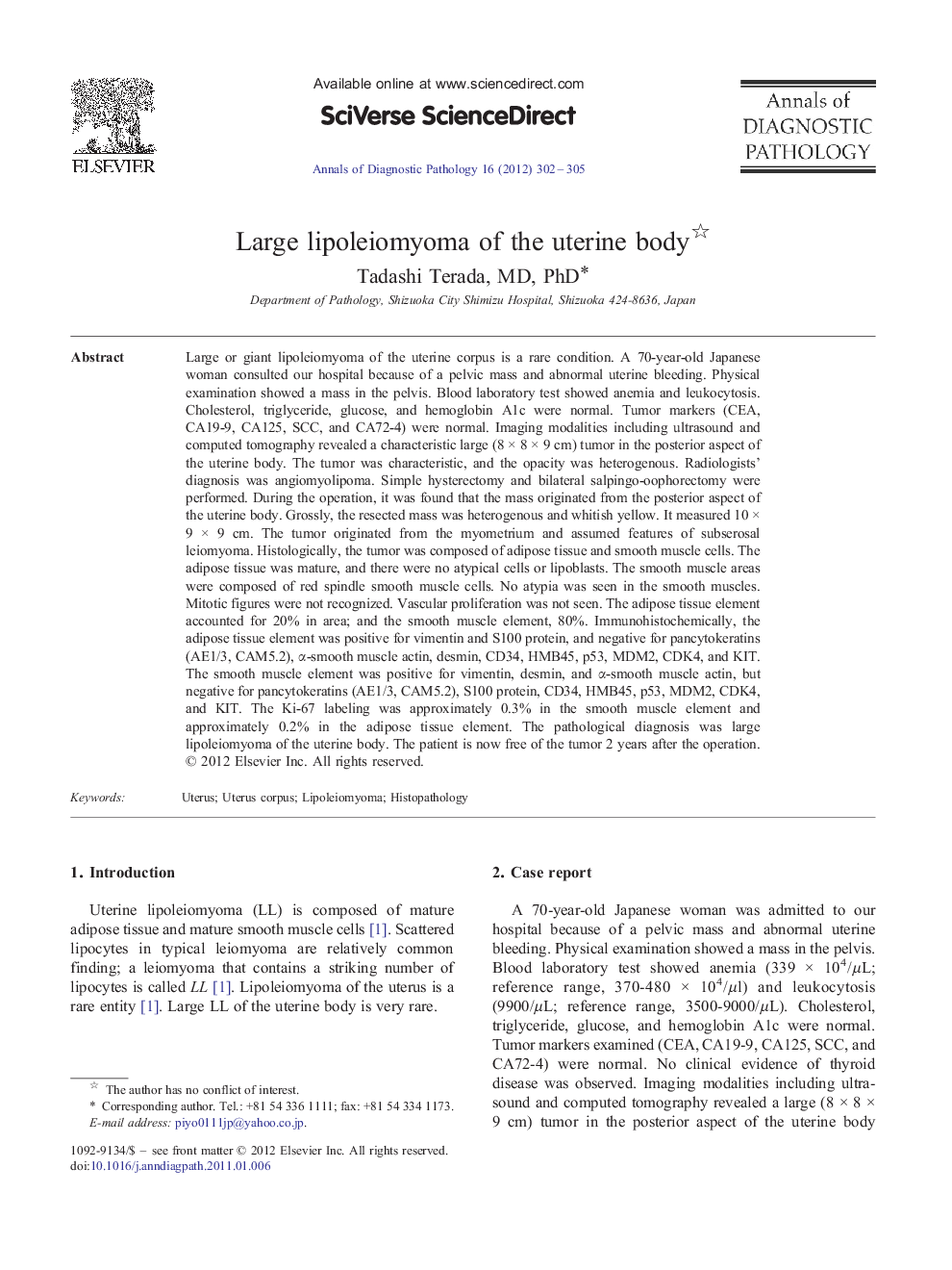| Article ID | Journal | Published Year | Pages | File Type |
|---|---|---|---|---|
| 4130007 | Annals of Diagnostic Pathology | 2012 | 4 Pages |
Large or giant lipoleiomyoma of the uterine corpus is a rare condition. A 70-year-old Japanese woman consulted our hospital because of a pelvic mass and abnormal uterine bleeding. Physical examination showed a mass in the pelvis. Blood laboratory test showed anemia and leukocytosis. Cholesterol, triglyceride, glucose, and hemoglobin A1c were normal. Tumor markers (CEA, CA19-9, CA125, SCC, and CA72-4) were normal. Imaging modalities including ultrasound and computed tomography revealed a characteristic large (8 × 8 × 9 cm) tumor in the posterior aspect of the uterine body. The tumor was characteristic, and the opacity was heterogenous. Radiologists' diagnosis was angiomyolipoma. Simple hysterectomy and bilateral salpingo-oophorectomy were performed. During the operation, it was found that the mass originated from the posterior aspect of the uterine body. Grossly, the resected mass was heterogenous and whitish yellow. It measured 10 × 9 × 9 cm. The tumor originated from the myometrium and assumed features of subserosal leiomyoma. Histologically, the tumor was composed of adipose tissue and smooth muscle cells. The adipose tissue was mature, and there were no atypical cells or lipoblasts. The smooth muscle areas were composed of red spindle smooth muscle cells. No atypia was seen in the smooth muscles. Mitotic figures were not recognized. Vascular proliferation was not seen. The adipose tissue element accounted for 20% in area; and the smooth muscle element, 80%. Immunohistochemically, the adipose tissue element was positive for vimentin and S100 protein, and negative for pancytokeratins (AE1/3, CAM5.2), α-smooth muscle actin, desmin, CD34, HMB45, p53, MDM2, CDK4, and KIT. The smooth muscle element was positive for vimentin, desmin, and α-smooth muscle actin, but negative for pancytokeratins (AE1/3, CAM5.2), S100 protein, CD34, HMB45, p53, MDM2, CDK4, and KIT. The Ki-67 labeling was approximately 0.3% in the smooth muscle element and approximately 0.2% in the adipose tissue element. The pathological diagnosis was large lipoleiomyoma of the uterine body. The patient is now free of the tumor 2 years after the operation.
